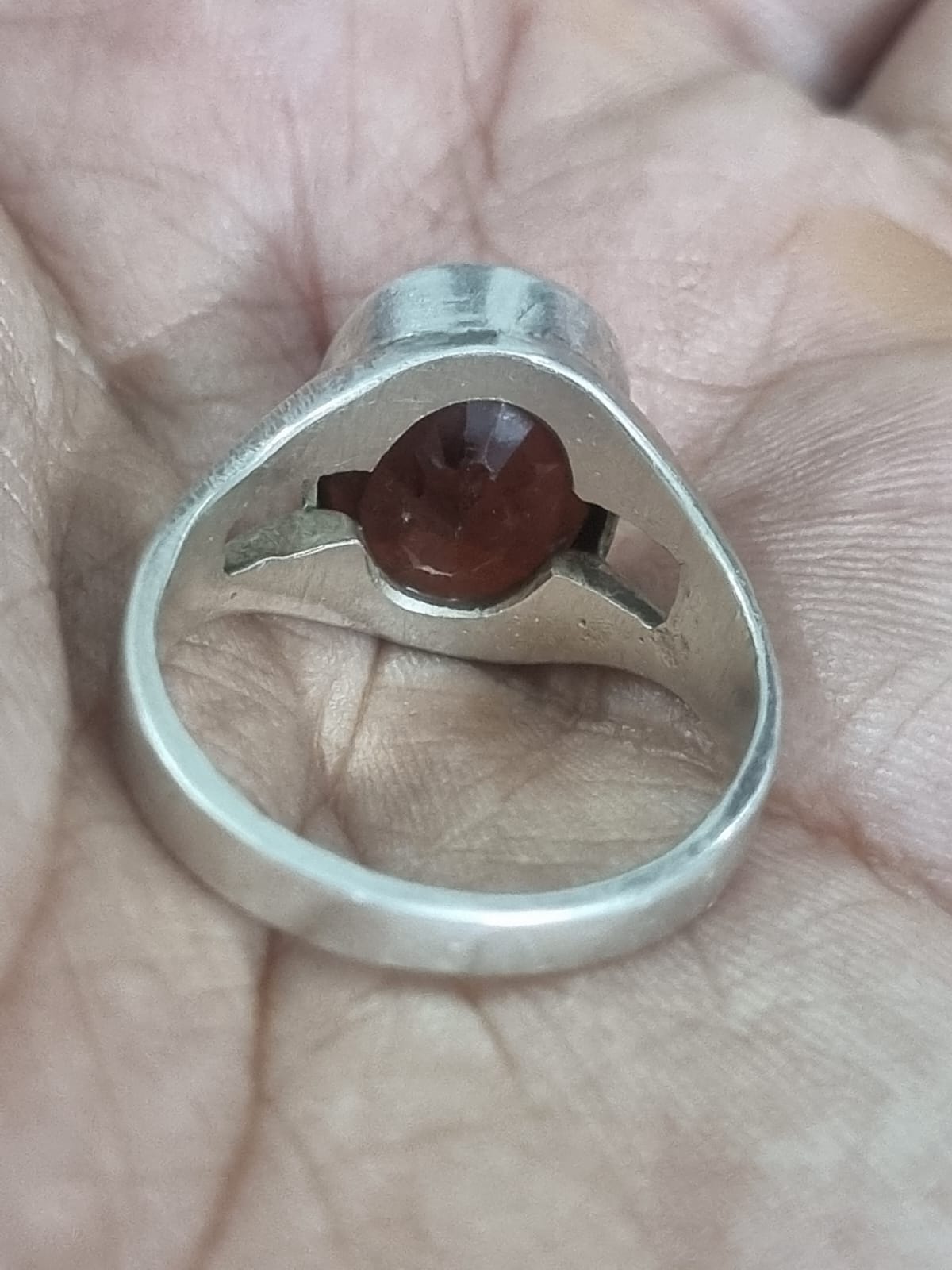Amethyst Inclusions
Learn about amethyst inclusions, their types, meanings, and value impact. Identify real vs fake and shop authentic amethyst at Vedic Crystals.

Amethyst Inclusions: Types, Meaning, Identification & Impact on Value
Amethyst is one of the most popular and spiritual crystals in the world, prized for its rich purple color, healing properties, and metaphysical energy. But not all Amethyst stones are alike.
When selecting a piece—whether raw, tumbled, or faceted—you might notice “inclusions” inside the crystal. These tiny features can be beautiful, mysterious, or even impact the stone’s value. But what exactly are Amethyst inclusions, and what do they mean?
In this ultimate guide, we’ll explore:
-
What inclusions are
-
The different types of inclusions found in Amethyst
-
Whether inclusions add or reduce value
-
How to tell real Amethyst from fake
-
What these internal “flaws” can reveal energetically and scientifically
Let’s dive into the fascinating world inside the Amethyst.
📚 Table of Contents
-
What Are Inclusions in Crystals?
-
What Makes Amethyst Unique?
-
Types of Inclusions Found in Amethyst
-
Scientific vs Metaphysical Interpretation of Inclusions
-
How Inclusions Affect Amethyst Value
-
Common Inclusion Patterns in Natural Amethyst (Table)
-
Fake vs Real: How Inclusions Can Help You Identify Authentic Amethyst
-
Amethyst Varieties and Their Typical Inclusions
-
How to Clean, Store & Care for Inclusions in Amethyst
-
Where to Buy High-Quality Natural Amethyst – Vedic Crystals
🌌 1. What Are Inclusions in Crystals?
Inclusions are internal features or impurities trapped inside a crystal during its formation. These can be:
-
Minerals
-
Liquids or gases
-
Growth lines
-
Color zoning
They’re completely natural and often used to verify the authenticity of a gemstone.
In Amethyst, inclusions are signs of natural growth and geological history—not imperfections.
💜 2. What Makes Amethyst Unique?
Amethyst is a violet to purple form of Quartz (SiO₂). It owes its color to trace amounts of iron and natural radiation.
Key Features of Amethyst:
| Property | Detail |
|---|---|
| Chemical Formula | SiO₂ (Quartz) |
| Color | Light lavender to deep purple |
| Hardness (Mohs) | 7 |
| Chakra Alignment | Third Eye, Crown |
| Primary Origins | Brazil, Uruguay, Zambia, Russia, India |
Amethyst's clarity varies. Some stones are “eye-clean,” while others contain visible inclusions that tell a story.
🔍 3. Types of Inclusions Found in Amethyst
Amethyst can contain a wide range of inclusions. These are natural, and each type reveals something about how and where the crystal formed.
🧪 Most Common Inclusion Types:
-
Needle-like inclusions (rutile)
-
Color zoning (light/dark purple bands)
-
Liquid or gas bubbles
-
Feather inclusions or fissures
-
“Phantom” layers (ghost crystals inside)
-
Hematite flakes (red specks)
-
Chlorite or other green mineral inclusions
Let’s look at these in more detail in a table below.
📊 4. Scientific vs Metaphysical Interpretation of Inclusions
Inclusions aren’t just geological phenomena—they’re also interpreted in spiritual and healing practices.
| Inclusion Type | Scientific Meaning | Metaphysical Meaning |
|---|---|---|
| Rutile Needles | Titanium oxide trapped during growth | Clarity, focus, spiritual downloads |
| Color Zoning | Temperature variation during formation | Duality, balance of emotions |
| Phantom Crystals | Pause in growth, then restart | Past-life healing, evolution of soul |
| Gas Bubbles | Rapid crystallization | Emotional release, suppressed trauma rising |
| Hematite Inclusions | Iron-rich environment | Grounding, protection, energy flow |
🔮 Healers often choose crystals based on inclusion types to match specific intentions.
🔬 5. How Inclusions Affect Amethyst Value
You might assume that a perfectly clear Amethyst is always more valuable—but that’s not always true.
💰 Inclusions & Value:
| Inclusion Presence | Market Impact |
|---|---|
| Minor, aesthetic inclusions | No major effect, especially in raw stones |
| Rare or phantom patterns | May increase collector value |
| Dense inclusions in faceted stones | Reduces transparency, lowers price |
| Authentic natural inclusions | Confirms stone is real, adds legitimacy |
Inclusions in raw or healing Amethyst are often valued by energy workers more than jewellers.

📈 6. Common Inclusion Patterns in Natural Amethyst (Table)
| Inclusion Type | Visual Description | Origin Indicator |
|---|---|---|
| Phantom Layer | Ghost-like crystal within crystal | Brazil, Uruguay |
| Zoning Bands | Stripes of varying purple shades | Russia, India |
| Hematite Specks | Red dots or shimmer inside crystal | Zambia, Africa |
| Fingerprint Inclusion | Swirly, cloud-like patterns | Natural quartz growth |
| Liquid Inclusions | Small bubbles trapped inside | Indicates untouched natural stone |
These can be spotted under magnification or even with the naked eye in some cases.
🧿 7. Fake vs Real: How Inclusions Can Help You Identify Authentic Amethyst
Inclusions are one of the best ways to identify real Amethyst—since synthetic versions are often too perfect.
🔍 How to Use Inclusions for Authentication:
-
Look for natural patterns: Straight lines or identical specks may mean dye or lab-made
-
Check color consistency: Real Amethyst often has zones or gradients
-
Search for ‘flaws’: Natural gas bubbles, cracks, or cloudiness = good sign
-
Use a jeweler’s loupe: Magnify inclusions for analysis
🧪 If it looks too perfect, it’s probably fake.
💎 8. Amethyst Varieties and Their Typical Inclusions
Different origins and varieties of Amethyst come with distinct inclusion patterns.
| Variety | Typical Inclusions |
|---|---|
| Uruguayan Amethyst | Deep color, minimal inclusions, high clarity |
| Brazilian Amethyst | Color zoning, phantoms, feather inclusions |
| Zambian Amethyst | Hematite specks, red tones |
| Chevron Amethyst | White quartz bands, visible zoning lines |
| Brandberg Amethyst | Enhydros (water bubbles), phantoms |
Each location creates unique internal features due to different environmental conditions.
🧼 9. How to Clean, Store & Care for Inclusions in Amethyst
Inclusions can be delicate, especially in cluster or raw form. Here’s how to care for your stone:
🧹 Cleaning Tips:
-
Use lukewarm water and soft cloth
-
Avoid harsh chemicals or ultrasonic cleaners
-
For clusters, use a soft brush to clean between crevices
🧊 Storage Tips:
-
Keep in a padded box or pouch
-
Avoid direct sunlight (can fade color)
-
Don’t store with harder stones (Amethyst can scratch)

🛍️ 10. Where to Buy High-Quality Natural Amethyst – Vedic Crystals
🧿 Want Amethyst that’s 100% natural with authentic inclusions?
✅ Recommended: Vedic Crystals
Why Buy From Vedic Crystals?
-
💎 Only natural, untreated Amethyst
-
🔬 Carefully inspected for natural inclusions
-
🔮 Reiki-charged & ready for healing use
-
📿 Variety: tumbled stones, raw clusters, faceted jewelry
-
🌍 Global delivery with secure packaging
-
🧘 Trusted by energy healers, crystal therapists, and collectors
👉 Shop Authentic Amethyst with Natural Inclusions Now
✨ See the story inside your stone—with real, unaltered Amethyst from Vedic Crystals.
✅ Conclusion: Why Amethyst Inclusions Matter
Inclusions are more than “flaws”—they are natural fingerprints of Earth’s creative energy. They help verify authenticity, guide healing work, and add to a crystal’s story.
🔑 Key Takeaways:
-
Amethyst inclusions range from gas bubbles to phantom layers
-
They provide both scientific and spiritual insight
-
Inclusions confirm natural origin and energetic integrity
-
They may lower jewelry value but increase healing significance
-
Buy from trusted sellers like Vedic Crystals to ensure authenticity
So next time you pick up an Amethyst, look inside. What you see could be millions of years old—and might just be the energetic signature your soul needs.
❓ FAQs – Amethyst Inclusions
Q: Are inclusions in Amethyst a bad thing?
Not at all! Inclusions are natural and often add to the stone’s uniqueness and healing power.
Q: Do inclusions mean my Amethyst is fake?
No. Inclusions are often proof that it’s real. Fake stones are usually too perfect.
Q: Can inclusions affect energy?
Yes. Healers believe different inclusions carry specific vibrational messages.
Q: Are phantoms and enhydros rare?
Yes. Phantom Amethysts and enhydros (with trapped water) are rare and prized by collectors.
Also you can buy high quality gemstones of various ratti at affordable prices from Vedic Crystals
For more information about Vedic Crystals and our range of gemstones and rudraksha beads, visit Vedic Crystals website or contact us at contactus@vediccrystals.com/ +91-9811809967 (Whatsapp).
Also if you found this article useful , please share it with someone who might need it.
Moreover, in case you want a additional 5% discount coupon on our entire range of gemstones and Rudraksha : Please comment "Interested" below.




































